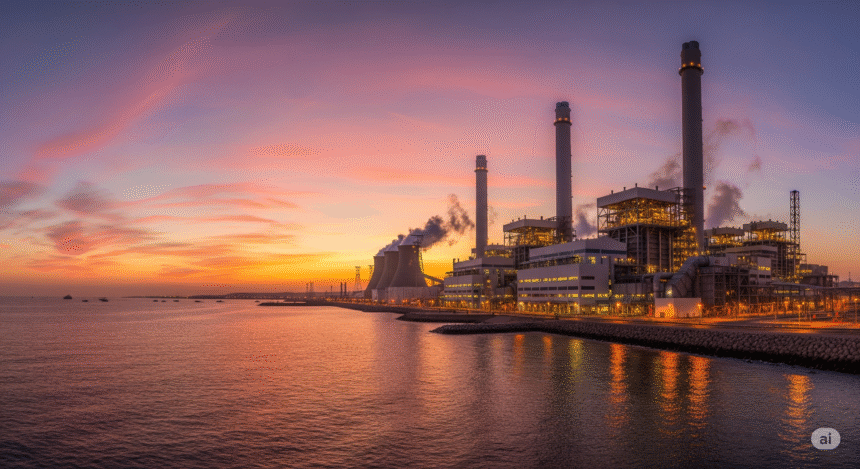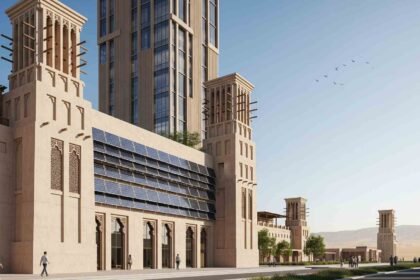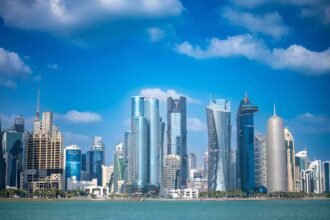The Saudi Electricity Company has reached a significant milestone in the construction of the Rabigh Combined-Cycle Power Plant in the country’s western region. The plant’s Unit 41 has achieved “First Fire”, the first ignition in the gas turbine, representing a major step toward delivering 1,200 MW of new generating capacity to the grid.
First Fire: What It Means
“First Fire” is a pivotal event in power plant commissioning, signifying that the gas turbine, generator, and auxiliary systems are fully operational and have passed inspection. For Unit 41, this includes successful testing of:
- The gas turbine and its generator
- Air intake and exhaust gas systems, including bypass stack and diverter damper
- Auxiliary systems: closed cooling water, service water, compressed air, fuel‑gas receiving, and demineralized water
- The electrical system, which has been energized and is ready for power distribution and turning‑gear activation.
According to the consortium of Elsewedy Electric Power Systems and Siemens Energy that built the plant, First Fire confirms that all key mechanical and electrical systems are ready for operations.
Progress of Other Units
SEC also reported that Unit 42 has been “back‑energized”, receiving power again after a maintenance or testing shutdown, and is now being prepared for its own First Fire, expected next week. Unit 43 is similarly nearing that stage with back‑energization expected in the coming days.
Once all three units are fully operational, the plant will supply enough electricity to serve roughly 500,000 residential units annually, significantly supporting the kingdom’s soaring energy needs.
Who Built It and Why It Matters
The Rabigh plant forms part of SEC’s strategy to expand and reinforce Saudi Arabia’s power-generation fleet. Its construction aligns with the mandate of the Saudi Power Procurement Company, the principal buyer of generation outputs in the country.
Ownership and operation responsibilities lie primarily with SEC, while engineering, procurement, and construction were handled by a joint venture of Egypt’s Elsewedy Electric Power Systems and Siemens Energy. The high-capacity combined-cycle design, which couples gas turbines with steam turbines, ensures higher efficiency and lower emissions compared to traditional simple-cycle plants.
Context and Strategic Impact
Saudi Arabia continues its robust investment in energy infrastructure. The Rabigh plant is part of a broader roster of new-generation projects intended to meet both residential and industrial demand while advancing the kingdom’s Vision 2030 goals. It complements an ongoing drive to diversify power sources and boost grid resilience.
With a total output of 1.2 GW, the Rabigh plant alone will provide a substantial boost to the national grid, supporting economic growth amid Saudi Arabia’s expanding desalination, manufacturing, and urban development sectors.
The Outlook
SEC, Elsewedy, and Siemens Energy will now focus on:
- Preparing Units 42 and 43 for First Fire.
- Conducting full-load testing and synchronization with the grid.
- Launching commercial operation once all units are validated.
The SEC’s swift progress, synchronizing multiple units within weeks, signals strong project management and effective collaboration among partners. When complete, the plant will play a vital role in enhancing supply security for nearly half a million homes.
Bottom line: The Rabigh Combined‑Cycle Power Plant has entered a crucial commissioning phase with First Fire on Unit 41. As Units 42 and 43 follow suit, the 1,200 MW facility is on track to become a key pillar of Saudi Arabia’s power generation network, supporting half a million homes and reinforcing the nation’s energy infrastructure in line with its economic ambitions.







